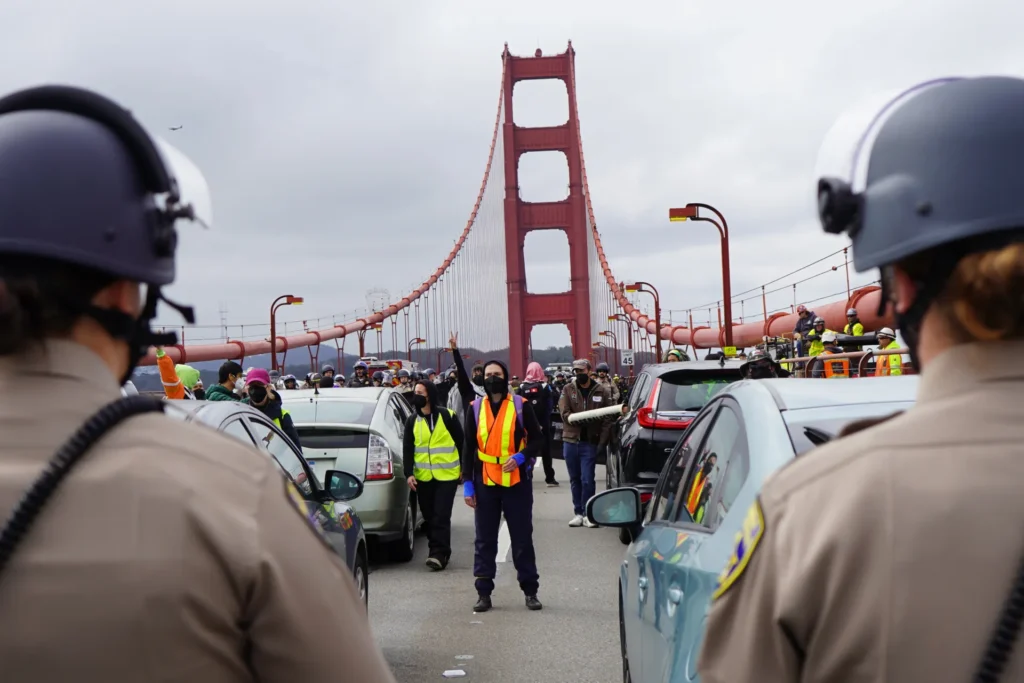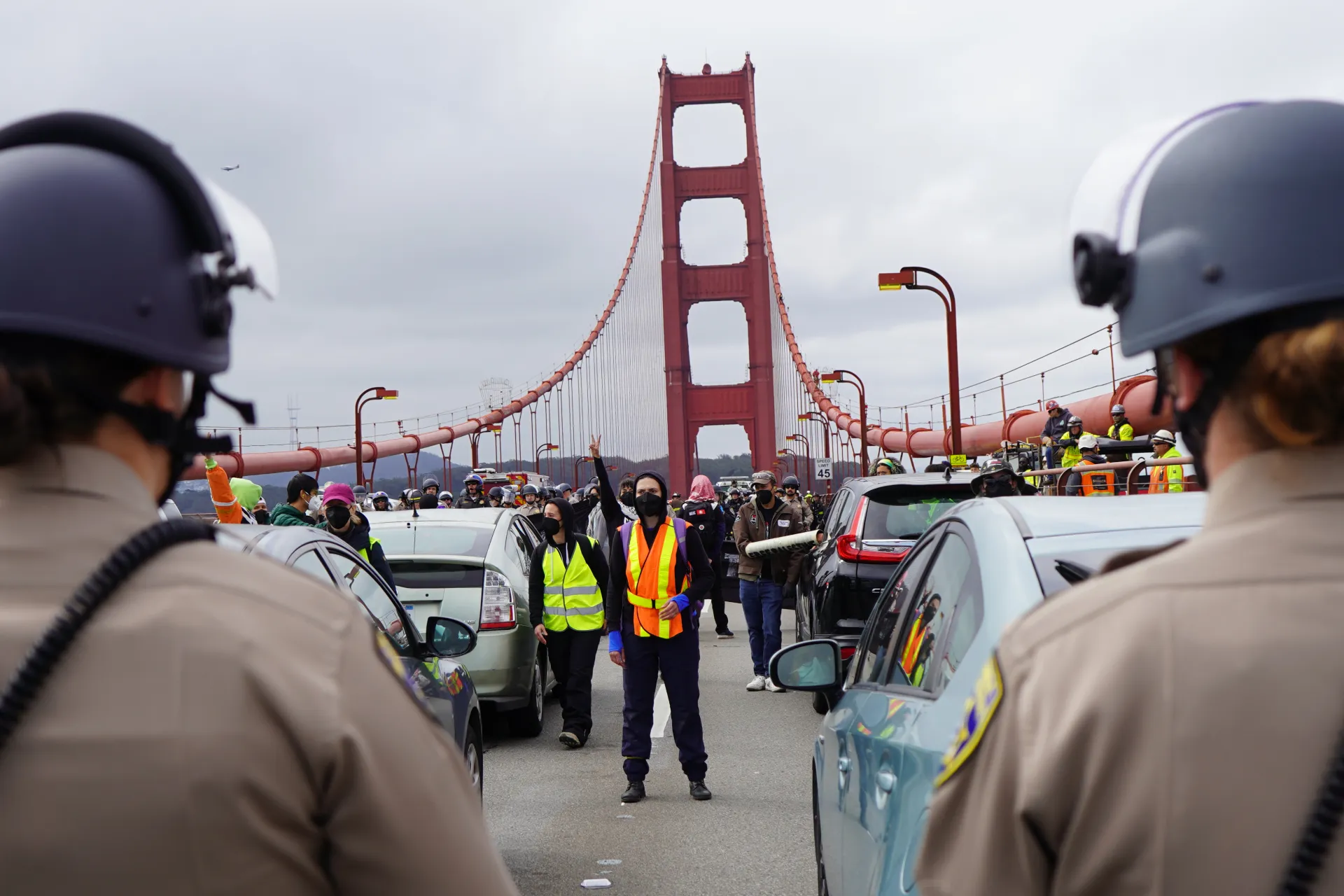“Golden Gate Bridge protest, Gaza ceasefire protest, Highway 101 traffic disruption, Israel-Hamas conflict, San Francisco protests, California Highway Patrol arrests, traffic updates, political activism”
“Discover the full story behind the Golden Gate Bridge protest that halted traffic for hours as activists demanded a ceasefire in the Israel-Hamas conflict. Learn about the arrests made, the impact on commuters, and the global solidarity movements with our in-depth coverage.”

On a recent Monday morning, the iconic Golden Gate Bridge became the center of a significant protest, leading to extensive traffic disruptions and multiple arrests. The protest was part of a larger movement calling for a cease-fire in the Israel-Hamas conflict, reflecting a global sentiment against the ongoing violence.
Early in the morning, a group of determined protesters effectively blocked traffic on both directions of Highway 101, which traverses the Golden Gate Bridge, causing a massive halt in the normal flow of vehicles. The California Highway Patrol (CHP) issued an alert at 8:10 a.m., indicating that all lanes were closed due to what was described as police activity. Commuters were advised to seek alternative routes to avoid getting stuck in the gridlock.
The CHP, along with other law enforcement agencies, began responding to the situation around 10:32 a.m., starting the process of arresting the protesters. Approximately 20 individuals were taken into custody by noon, and around 15 vehicles were towed from the scene. This decisive action led to the reopening of all traffic lanes shortly after 12:15 p.m., restoring the bridge’s usual bustling activity.
According to Officer Darrell Horner of the CHP, the protesters had strategically used stationary vehicles to chain themselves, making it challenging for authorities to quickly clear the lanes. This method of protest not only drew significant attention but also highlighted the lengths to which activists were willing to go to voice their concerns over the Gaza situation.
The impact of the protest extended beyond just the roadway. Golden Gate Transit reported significant disruptions to bus services, with many unable to cross the bridge. They advised commuters to use the Golden Gate Ferry as an alternative, which likely experienced higher than usual passenger volumes due to the protest.
Further complicating the day’s events, a similar protest occurred on Interstate 880 in Oakland. A lone protester was detained near I-880 after a group blocked the southbound lanes, echoing the methods used on the Golden Gate Bridge. Banners displaying messages such as “End the Siege on Gaza Now” and “Stop the World for Gaza” were prominently displayed, signaling a strong and clear message to passersby and the media.
The organizers of the protest, in a public statement, declared their intention to continue the demonstration until forcibly removed by the authorities. They described their actions as part of a coordinated global economic blockade aimed at expressing solidarity with Palestinians in Gaza and criticizing the U.S. government’s financial and military support to Israel.
These protests are part of a broader pattern of similar demonstrations that have been occurring in San Francisco and surrounding areas. Activists have repeatedly targeted major bridges and intersections to draw attention to their cause, employing high-profile tactics to ensure visibility and impact. The frequency and intensity of these protests underscore a persistent and passionate engagement with global political issues, particularly the contentious and heart-wrenching conflict in Gaza.
As these events unfold, they not only affect the immediate areas involved but also provoke discussions and responses from communities and governments around the world. The strategic choice of high-visibility locations like the Golden Gate Bridge for such protests amplifies the message, pushing it onto national and international stages. The ongoing dialogue surrounding these demonstrations reflects the complex interplay of local actions and global politics, highlighting the deep connections and concerns that tie diverse communities to distant conflicts.
Read Also-
